Ben Hur (2016 film)
4 /10 1 Votes
Genre History Country United States | Music director Junkie XL Language English | |||||||||||||||||||||||||||||||||
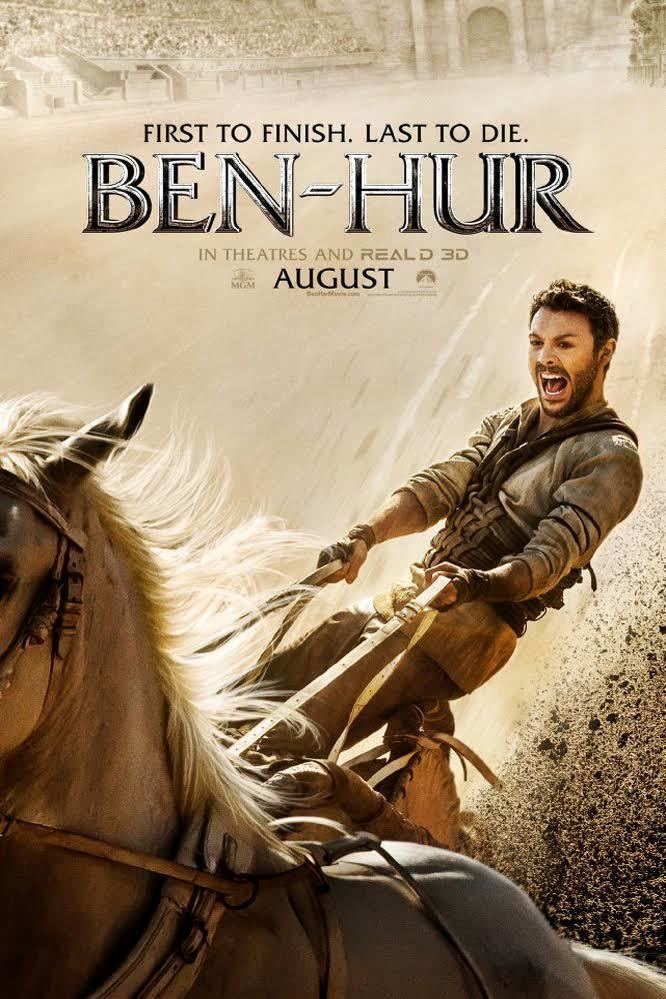 | ||||||||||||||||||||||||||||||||||
Release date February 26, 2016 (2016-02-26) (United States) Cast (Judah Ben-Hur), (Esther), (Ilderim), (Messala), (Jesus), (Naomi) Similar movies Ben Hur (2003) | ||||||||||||||||||||||||||||||||||
Ben hur 3 10 movie clip the chariot race 1959 hd
Ben-Hur is a 2016 American historical epic film directed by Timur Bekmambetov and written by Keith Clarke and John Ridley. It is the fifth film adaptation of the 1880 novel Ben-Hur: A Tale of the Christ by Lew Wallace following the 1907 silent film, the 1925 silent film, the Academy Award-winning 1959 film and the 2003 animated film of the same name. It has been termed a "re-adaptation", "reimagining", and "new interpretation" of the novel. The film stars Jack Huston, Morgan Freeman, Toby Kebbell, Nazanin Boniadi, Haluk Bilginer, and Rodrigo Santoro.
Contents
- Ben hur 3 10 movie clip the chariot race 1959 hd
- Ben hur 7 10 movie clip ben hur meets jesus 1959 hd
- Plot
- Cast
- Development
- Writing
- Casting
- Principal photography
- Chariot race sequence
- Soundtrack
- Score
- Track listing
- Release
- Marketing
- Home media
- Box office
- Critical response
- References

Principal photography began on February 2, 2015 in Matera, Italy and lasted about five months, finishing in June 2015. Ben-Hur premiered on August 9, 2016 in Mexico City and was theatrically released by Paramount Pictures and Metro-Goldwyn-Mayer on August 19, 2016 in the United States in 2D, 3D, RealD 3D, Digital 3D, and IMAX 3D. The film received generally negative reviews and was a box office bomb, grossing $94.1 million worldwide against its $100 million production budget plus a large amount spent on marketing and distribution.
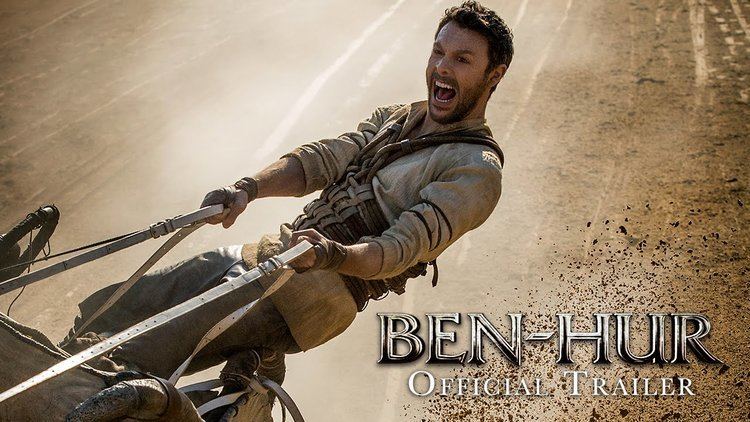
Ben hur 7 10 movie clip ben hur meets jesus 1959 hd
Plot
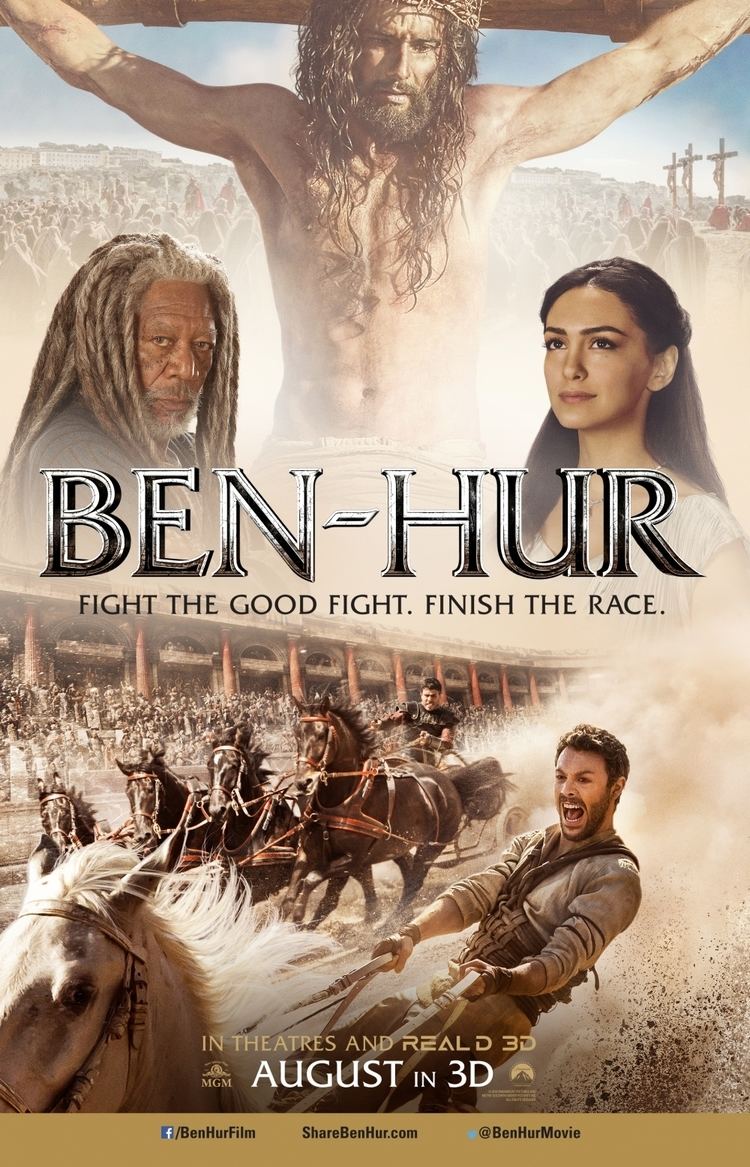
A Jewish nobleman, Judah Ben-Hur (Jack Huston) and his adoptive Roman brother Messala (Toby Kebbell) are best friends despite their different origins. While racing horses, Ben-Hur is hurt and Messala carries him back to their family home in Jerusalem. Despite the hospitality of Ben Hur's mother Naomi (Ayelet Zurer) and the affections of sister Tirzah (Sofia Black D'Elia), Messala feels alienated in his adopted family. He enlists in the Roman army and fights in the Roman Empire's wars in Germany. Ben-Hur also develops feelings for the family slave Esther (Nazanin Boniadi) although their different station in life compels him not to pursue her. But when her father Simonides (Haluk Bilginer) seeks to marry her off to a Roman, Judah declares his love for her and takes her as his wife.
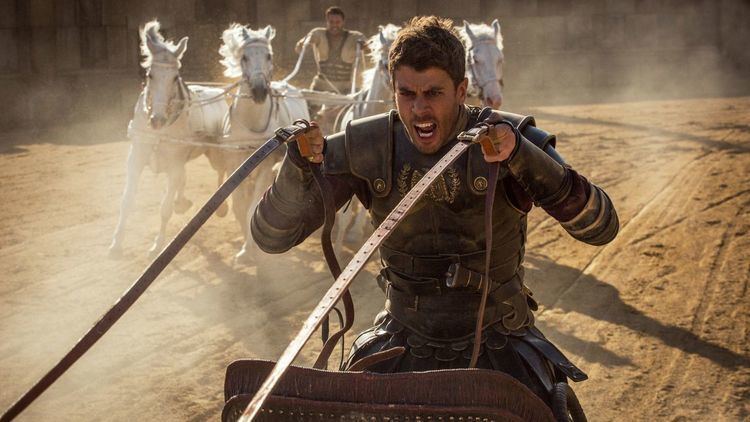
Three years later, Messala returns as a decorated Roman officer. His return coincides with a rising insurrection by the Zealots, who are opposed to the oppressive nature of Roman rule. Judah treats and shelters a young Zealot youth named Dismas (Moisés Arias). Messala reunites with Ben-Hur and attempts to convince his adoptive brother to serve as an informant. Following a reunion dinner with Ben-Hur and his family, Messala informs them that a new Roman governor Pontius Pilate (Pilou Asbæk) will be taking residence in Jerusalem and that no incidents must occur.
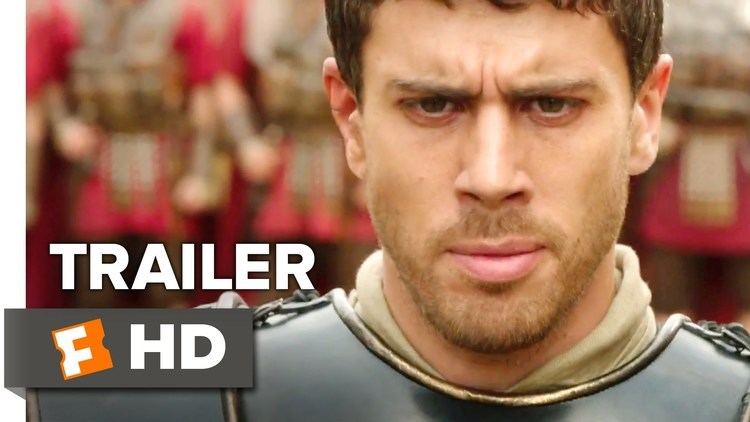
Days later, Pontius Pilate marches into Jerusalem with Ben-Hur and his family watching from a balcony. Dismas attempts to assassinate Pilate with a bow but fails. In retaliation, the Romans storm Ben-Hur's household and arrest him and his family. Rather than betray a fellow Jew, Ben-Hur takes responsibility for the assassination attempt and is sentenced to enslavement aboard a galley. His mother and sister are sentenced to be crucified. Ben-Hur and Messala fall out with the two hating each other for their perceived betrayals. While being led to the galley, Ben-Hur encounters Jesus (Rodrigo Santoro), who fetches him some water.
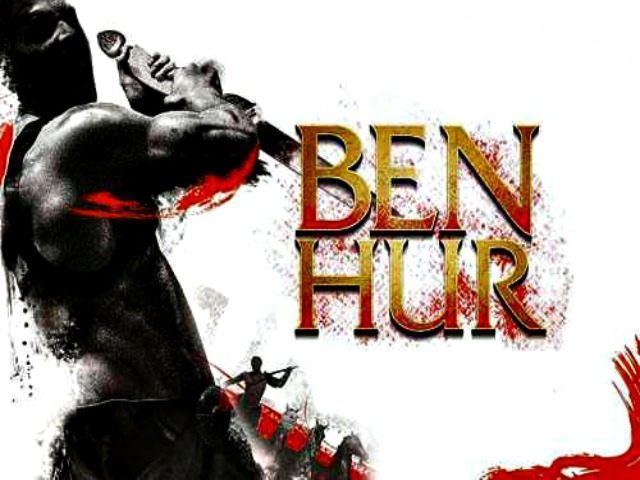
Ben-Hur endures five years of slavery as a rower aboard a Roman galley under the command of Quintus Arius (James Cosmo). During a naval battle against Greek rebels in the Ionian Sea, Ben-Hur's galley is boarded. The drummer pressures the slaves to row, but the galley collides with another ship and is destroyed as Ben-Hur manages to cling to a floating mast. He is washed ashore and is found by Sheik Ilderim (Morgan Freeman), who recognizes him as an escaped slave. Ben-Hur manages to convince Ilderim not to hand him over to the Romans by treating one of the Nubian's racing horses. After Ben-Hur develops a bond with the four racing horses, a grateful Ilderim then trains Ben-Hur to be a chariot racer.
Ben-Hur and Sheik Ilderim later travel to Jerusalem to take part in a grand chariot race at the newly built Roman circus. Jesus' preaching ministry draws the attention of governor Pilate and Messala, who is now the commander of the Roman garrison and a champion chariot racer. While visiting Jerusalem, Ben-Hur encounters Esther, who has become a follower of Jesus and is involved in charity work. Esther tells Ben-Hur that his mother and sister are dead, and despite their reunion, the two are kept emotionally apart due to her new cause which is contrary to Judah's insistence on seeking revenge against Messala.
Ben-Hur later confronts Messala alone in their former home but is forced to flee when Roman soldiers turn up. After the Romans execute twenty Jews in reprisal, Esther completely falls out with Ben-Hur. Sheik Ilderim instructs Ben-Hur in chariot racing techniques. Later, Ben-Hur encounters a former Roman soldier named Druses (Marwan Kenzari), who informs him that his mother Naomi and sister Tirzah are still alive. However, their reunion is soured when Ben-Hur discovers his mother and sister have leprosy, the former also appearing to have lost her memory.
Sheik Ilderim bribes Pilate into allowing Ben-Hur to compete by proposing a high wager. Esther tries to convince Messala not to race Ben-Hur, but he is adamant that he will win. On the day of the race, Ben-Hur follows Ilderim's instructions to hold back from the race until the final laps. Using dirty tactics, Messala manages to knock out the other competing charioteers. Following a brutal and grueling race, Ben-Hur wins the race. Messala survives but is badly wounded and loses a leg. Ben-Hur's victory embolden the Jewish spectators and yields dividends for Ilderim.
Despite his victory, Ben-Hur is despondent about his family and his former friend Messala. Later, Esther witnesses the arrest of Jesus in the Garden of Gethsemane. Ben-Hur and Esther witness a bruised and beaten Jesus being forced to carry his cross through the streets. Mirroring his first encounter with Jesus, Ben-Hur tries to offer Jesus water but is beaten by a Roman soldier. Following Jesus' crucifixion, a rainstorm occurs. Naomi and Tirzah are miraculously healed by rainwater containing the blood of Jesus, and Sheik Ilderim pays a ransom to set them free.
In the end, Ben-Hur reconciles with Messala. Despite his anger, Messala finds the strength to forgive Ben-Hur and is reconciled to him and his family. Together, Ben-Hur, his mother, sister, Esther, and Messala accompany Sheik Ilderim's caravan as they leave Jerusalem.
Cast
Development
In 2013, Metro-Goldwyn-Mayer acquired Keith R. Clarke's script, an adaptation of Lew Wallace's 1880 novel Ben-Hur: A Tale of the Christ, which is in the public domain.
In April 2014, Paramount Pictures and MGM announced that they would co-produce a new version of Ben-Hur, based on the novel, with Mark Burnett and Roma Downey serving as producer and executive producer, respectively. MGM had previously released two films based on the book, the 1925 silent film and the more famous 1959 film of same name. The rights to the latter film were sold to Ted Turner in the 1980s. MGM had just emerged from bankruptcy due to the global success of the twenty-third James Bond film, Skyfall, and The Hobbit: An Unexpected Journey, which both went to gross over $1 billion at the box office worldwide, including above $300 million in the United States and Canada, while Paramount were doing well at the time with the biblical tale Noah. John Ridley (12 Years a Slave) was hired to revise the script, with Sean Daniel, Burnett and Joni Levin attached to produce, and Downey, Clarke, and Jason Brown executive producing. Duncan Henderson was later attached to produce, with John Ridley also executive producing. It was announced that the new film would differ from the 1959 version, and deal with the formative relationships of Ben-Hur and Messala growing up as best friends, before the Roman Empire took control of Jerusalem, and that Christ would have a prominent role.
In September 2013, Timur Bekmambetov was hired to direct the film. Bekmambetov was initially reluctant to direct and did not wish to tackle a film whose predecessor had so much impact. After producer Sean Daniel persuaded him to read the script, he accepted it, saying "I read the script. And suddenly I understood this story is not what I expected. It's not a remake, it's an interpretation of the famous book." He stated the story of Ben-Hur reminded him of Romeo and Juliet, Hamlet, and Anton Chekhov's work. He was fascinated by the 1959 film but found the focus on revenge rather than forgiveness to be the main problem; this was the prime difference between the book and the 1959 movie: the book was written about forgiveness, and the movie was about revenge and miracles. Hence, he wanted to stress the themes of forgiveness and love rather than mere vengeance. He found "the most important values of pride, rivalry, power, strength, the dictatorship of power and self-love" that were prominent in the Roman Empire to be the primary subjects in this version. He said that the film is not just the story of Ben-Hur, but rather the shared story of him and his brother, Messala. Bekmambetov was aware of the comparisons being made with the earlier classical adapted films, and hence felt the need to make the film very different from the others. As a result, he decided to make a realistic drama film rather than a large tent-pole attraction. The director did not set out to make a more stylized version of the past, as he did with Abraham Lincoln: Vampire Hunter; he wanted to make a film that was more grounded and tangible.
Producer Mark Burnett stated that films like Ben-Hur, which are centered on faith and the messages of Jesus Christ, need to feel like epic summer blockbusters in order to attract younger and secular audiences. He explained that part of what caused the immensity of the budget – $100 million – are the special effects and the 3D experience that young audiences are expecting. MGM financed 80% of the production costs, while the remaining 20% were covered by Paramount.
In June 2015, Rob Moore, the vice chairman of Paramount, explained that this version is not so much a remake of the 1959 film, but a new interpretation of the Lew Wallace novel on which both are based.
Writing
John Ridley re-wrote the script based on an original screenplay by Keith Clarke, which itself was based on Lew Wallace's 1880 novel Ben-Hur: A Tale of the Christ. Ridley admired how Clarke went back to the source material and focused his attention on the subjects of racial slavery and colonization, and the deep relationships between the two friends. He was more drawn to the project since it dealt with themes of faith in a very "potent manner". The studio approached him in October 2013, after he wrote the screenplay for 12 Years a Slave, which went on to win an Oscar the following year. The studio wanted him to make "a production polish that deals with just honing the story and making it filmable."
Casting
Tom Hiddleston was originally considered for the title role, Judah Ben-Hur. Jack Huston was later cast instead. On September 11, Morgan Freeman was added to the cast to play Sheik Ilderim, the man who teaches Ben-Hur to become a champion chariot racer. On September 18, sources confirmed that Toby Kebbell was in early talks to play the villain, Messala. On October 15, Gal Gadot was in talks to join the film as Esther, the slave with whom Ben-Hur is in love. Pedro Pascal from the TV series Game of Thrones was in talks to play Pontius Pilate. On October 30, TheWrap confirmed that Gadot's negotiations with Paramount and MGM had ended, and the actress had withdrawn, reportedly due to scheduling conflicts with Batman v Superman: Dawn of Justice. On November 4, Marwan Kenzari was added to the cast as Druses, a Roman captain. On November 11, Ayelet Zurer was in final negotiations to play Naomi, Judah Ben-Hur's mother (Miriam in the book and the 1959 adaptation). On 13 November, Olivia Cooke was being considered for Tirzah, Ben-Hur's sister. On December 2, Nazanin Boniadi was confirmed as the actress who would play Esther. On January 12, 2015, Sofia Black D'Elia was cast as Ben-Hur's sister, Tirzah. On January 13, Rodrigo Santoro was announced as Jesus. On January 20, Moisés Arias was added to the cast to play Gestas, a teenage Jewish zealot who is desperate to fight for freedom, after his family has been murdered by the Romans. On January 21, Pilou Asbæk was cast as Pontius Pilate, replacing Pascal for the role.
Principal photography
On February 2, 2015, MGM and Paramount Pictures announced that principal photography had begun and that, like the original film, filming would take place mostly in Italy, specifically in Rome and Matera. The Sassi di Matera in Basilicata and the Cinecittà studios in Rome were also chosen among the film's settings. In most instances, CGI were used extensively. However, Bekmambetov wanted to rely more on practical effects and tried to do as little CGI as possible in moments where it was not heavily needed.
Producers Roma Downey and Mark Burnett chose Matera as a location for Jerusalem, one of the same locations where Mel Gibson's biblical movie The Passion of the Christ was filmed. Exterior shooting lasted for two months, and finished in early April 2015. Production then moved to Cinecittà Studios, where interior shooting took place for four months, including the chariot scene, among others. Around 2,000 extras were used throughout the film.
In March 2016, Adam Sidman, an associate of Timur Bekmambetov, sent a request to the Bureau of Land Management's South Coast in Palm Springs, which oversees federal land in the Coachella Valley area, asking if the team can shoot a horse scene in the Painted Canyon, which is off Box Canyon Road, with two horses, several cameras, and a film crew of about 30. His application was rejected, and Sidman thought it was because of the size of the production. He then tried to negotiate again, but to no avail. He then contacted the executive director of the Greater Palm Springs Film Alliance office, Levi Vincent, to look into the matter. To Vincent, it almost seemed like the rejection was based on arbitrary reasons. With the help of local lawmakers, they were able to convinced the BLM to approve the request, but this time with a much-scaled down production of 8 crew members, no horses, and the use of a drone rather than handheld cameras.
Chariot race sequence
The famous chariot race sequence, which runs about 10 minutes, almost exactly the same as in the prior films, was originally planned to be filmed in the Circus Maximus arena in Rome; however, producers were denied access by Italy's national cultural authorities due to fears that the stunts would damage the fragile historic site, which was under restoration at that time. The filming location had been approved by local officials, as well as Rome's mayor, Ignazio Marino, who lamented the decision to deny the producers access, saying, "The aim of the city administration isn't so much to raise revenue in exchange for the use of public space, but to give back to Rome the role of being a big international set, which is in our history and our tradition." According to sources obtained by The Guardian, the decision to forbid Ben-Hur from filming there was due to "technical" issues. Though no official reasons had been given, archaeological experts speculated that the influx of heavy filming vehicles and hundreds of extras to the arena could have caused untold damage to the site. However, the Italian cultural minister, Dario Franceschini, declined to comment. As a result, producers were forced to film the scene at Cinecittà Studios, where much of the original film was also shot. It is not clear whether the filmmakers had planned to use that location for the main chariot race, which is supposed to take place in Antioch, or if they were planning to shoot one of the earlier races that Judah Ben-Hur takes part in while he is still living in Rome. Bekmambetov, however, cited the size of the stadium as too large for shooting as the reason.
The whole race was planned in advance, in several iterations of storyboards and animated previsualization videos. In order to re-create the sequence, producers and horse race track experts built a 1,000-foot-long arena, with a 250 metre long and 50 metre wide track, stands, and gates, called Circus Tiberius, at Cinecittà World, a film-themed amusement park about 45 minutes south of Rome. It was built partly on the back lot of producer Dino De Laurentiis's former studio complex. According to production designer Naomi Shohan, arena designs were compiled from archaeological records of circuses in Roman territories. One-sixth of the arena was physically built and the rest was added to the film by computer graphics. Unique chariots were also built based on original references. A total of 86 horses were supplied by horse master Steve Dent, with back-up animals, and were trained for several months, to be able to race at 40 miles per hour. Dent has assembled larger stables for films like Ridley Scott's Robin Hood (2010), but said that "this was more of a worry job." There were 60 handlers for the horses, and 12 horses were put in rotation for every four horse-drawn carriage, so the animals would have a chance to rest. Unlike the chariots in the 1959 version, made by Italian craftsmen and weighed 900lb, this time the team wanted to use the equivalent of Ferraris – small and fast. Multiple chariots were made for each character – some with brakes (though the horses are strong enough to overpower the brakes), some with room for a second "blind driver" or 'bonnet-fitted' camera, some with different-sized wheels for filming on the turns instead of the straights, and some to flip over or crash. Massimo Pauletto, an art director on the film who built the chariots, said that his team had to reinvent a forgotten skill, "from the sketches, nobody was understanding how they could become real," and the toughest part was to fit together practical needs and special-effects needs. Problems cropped up day-by-day as the bolts that held the chariots together kept being broken by the horses due to their immense strength, and the bar that attached the horses was bent. As a result, the crew had to learn how to build a new one week after week.
To capture the thunderous feel of the race, the film crew attached microphones to the horses to record the sound of pounding hooves, and GoPro cameras were buried in the sand. The cameras were also planted on chariots and people, one of which was placed on a soccer ball in the middle of the track while the horses ran over it. Huston and Kebbell spent two and a half months preparing and rehearsing to learn how to drive chariot races in Italy, six days a week. It took time for the stuntmen to learn to drive them, and they were only called in for extremely dangerous stunts. But overall, it was actors in the chariots. A total of 20 chariots were used. A bulk of scenes were done using real practical stunts, without any CGI assistance, and digital models were only used when filming was too dangerous. Around 400 extras were used as spectators (which were then increased to around 100,000 with special effects). Bekmambetov's goal was to shoot these action scenes so realistically that the audience feels that they are inside the chariot and driving it. He was inspired by YouTube videos and Instagram photos, "The camerawork is very specific when we see NASCAR or motorbike racing on YouTube. It's either long-lens [close-up] cameras, very professional, or it's iPhone cameras from people in the crowd, cars passing by at the speed of light and they barely have a chance to pan and catch something."
Phil Neilson, who served as the stunt coordinator for the film, had previously worked on many films, including Ridley Scott's Gladiator. Jonathan Stamp, a historian who had consulted on the HBO/BBC series Rome, advised on the film's chariot design. He noted that the chariots in the 1959 film were unrealistically ornate. Filming for this particular scene lasted for 45 days in a span of three months. The inspiration for the use of minimal CGI for this sequence came from Hardcore Henry, on which Bekmambetov was a producer. Accidents were done with computer imagery. The two lead actors did much of their own riding, without harm.
Huston and Kebbell were asked if they wanted stunt doubles for their parts, and they declined.
A stuntman was thrown off from his chariot during filming, but suffered only mild injuries. A stuntman, however, was thrown from a chariot and run over by the wheel of another. He was later hospitalized and treated for bruised ribs. Bekmambetov said the authentic Roman costumes, with leather straps around the charioteer's chest, prevented that injury from being worse—though Daniel noted that every driver wore Kevlar underneath his costume.
All the harnesses and reins were made from nylon webbing. For the tightly scripted spills, huge rubber mats were placed beneath piles of sand to break falls. The horses wore leather booties to ensure their back hooves did not clip their front legs and gouge out chunks of flesh in the melee.
Soundtrack
Ben-Hur – Songs Inspired by the Epic Film is the soundtrack of the film. It was released on August 19, 2016 by Word Entertainment.
Score
Ben-Hur (Original Motion Picture Score) is the film score for Ben-Hur. All scores were composed and conducted by Marco Beltrami, with additional music by Brandon Roberts and additional conducting by Mark Graham. It was released on 5 August 2016 by Sony Classical Records.
Track listing
All music composed by Marco Beltrami.
Release
Ben-Hur was originally scheduled to be released on February 26, 2016, in the United States and Canada but Paramount moved its original release date this time from February 26, 2016, then to August 12, 2016. According to Variety, the decision to switch from February to August may have been due to the studio's faith in summer being the best time to release a tentpole epic. At the 2016 CinemaCon, However, Pete's Dragon, Sausage Party, and Anthropoid were also scheduled to be released on that date and Paramount again moved the release date this time, from August 12, 2016, and then to August 19, 2016, with the film's previous date then being occupied by Paramount's own Florence Foster Jenkins. The film was released in regular 2D, IMAX, 3D, Digital 3D, RealD 3D and IMAX 3D. It was released in the United Kingdom and Ireland on September 7.
Deadline.com called the August date a prime time for the studio, after witnessing success with the releases of Mission: Impossible – Rogue Nation and Teenage Mutant Ninja Turtles during the month of August. Furthermore, the site highlighted that the 2016 Summer Olympics would be an ideal platform for the studio to promote the film, and that mid-August has proven to be the last point of time in the summer for a film to accrue a large amount of revenue, before weekend box office performances drop from the Labor Day holiday onwards. Ben-Hur is the third summer 2016 tentpole from Paramount Pictures, following Teenage Mutant Ninja Turtles: Out of the Shadows (3 June) and Star Trek Beyond (22 July). It was the last big-budget release of the summer movie season.
Ben-Hur was released in Malaysia on 15 September 2016. The film's release drew controversy, when some viewers complained that scenes depicting Jesus Christ had been cut out from the Malaysian theatrical version. The Malaysian Film Censorship Board's chairman, Datuk Abdul Halim Abdul Hamid, clarified that the Malaysian censors had not cut out scenes depicting Jesus from the film, but suggested that the film producers did cut out a few scenes to suit the sensitivities of certain markets. The film's Malaysian distributor, United International Pictures Malaysia, has since confirmed that the cuts were made to fulfil local legal requirements and guidelines.
Marketing
Two exclusive photos of the film were released by USA Today on March 14, 2016. On March 15, Entertainment Tonight released a world exclusive premiere of some of the scenes of the chariot race, and on the following day, the first official trailer was released online, along with a teaser poster.
The trailer was released a week after Paramount released 10 Cloverfield Lane in theaters. Although Paramount did not secure a Super Bowl commercial spot for the film, Scott Mendelson of Forbes felt that it was an appropriate film to advertise before Sony Pictures' faith-based Miracles from Heaven opened on March 16. The trailer garnered a polarized reception from critics and audiences, with comparisons being made to 300: Rise of an Empire, Gladiator, and Spartacus: Blood and Sand. In its first week, the trailer was viewed over 8.2 million times across YouTube and Facebook, making it the fourth most viewed trailer of the week. The trailer was also screened in front of over 30,000 people at Hillsong Conference 2016.
Jesus is in the film, which was used for some faith-based marketing to a Christian audience.
Home media
Ben-Hur was released on Digital HD on November 29, 2016 and on Blu-ray and DVD on December 13, 2016.
Box office
Ben-Hur was called by Hollywood observers the summer's biggest box office bomb, and one of the biggest flops of 2016. The film grossed $26.4 million in the United States and Canada and $67.7 million in other countries for a worldwide total of $94.1 million, against a production budget of $100 million. Due to its underperformance at the box office, executives at rival studios believe the film lost around $100–120 million theatrically. Sources close to the film, however, believe the ultimate losses were likely $60–75 million, noting the film could do well on DVD and other home entertainment platforms. The losses for MGM were heavier, since they financed 80% of the total production budget, including marketing expenses. As a result, Paramount's share of the loss was about $13 million. Sources at rival studios put the film's break even point at about $250 million globally.
The Hollywood Reporter placed Ben-Hur among the biggest summer box office risks of 2016, while Forbes deemed it "the summer's most predictable miss/catastrophe". In the United States and Canada, the film was projected to gross to about $15 million in its opening weekend, a disappointing figure considering its $100 million production cost. Due to a negative reception from critics and the influx of heavy competition, the re-opening of schools after summer vacation, and the final weekend of the Rio Summer Olympics, the film's opening expectations were lowered as its opening approached. It opened Friday, August 19, 2016, on around 3,300 screens across 3,084 theaters, and earned $4.1 million, including $900,000 it made from Thursday previews at 2,389 theaters. The film went on to gross a low $11.2 million in its opening weekend, even with 3D and IMAX bumps, finishing sixth at the box office and third among new releases, behind Kubo and the Two Strings and War Dogs. The film's opening weekend demographic was 51% female vs. 49% male, with 94% of the overall audience coming in over the age of 25.
Many box office critics and publications considered the film a box office bomb based on its opening alone. Jeff Bock, a box office analyst with Exhibitor Relations, called it "the bomb of the summer." Critics pointed out that a lack of star power, its August release date, competition, negative reviews (both from critics and audiences), and a lack of marketing, were potential causes for the film's underperformance. According to Variety, the film was unable to expand beyond its core Christian audience. It performed well in areas of the US that are more religious, but did not do as well in more secular regions of the country. As a result of its debacle opening, Ben-Hur joined various other films set in ancient times to underperform at the box office, especially recent big-budget movies from major studios – Exodus: Gods and Kings (2014), The Legend of Hercules (2014), and Gods of Egypt (2016).
Ben-Hur will depend heavily on foreign markets, especially in Christian offshore territories, such as Latin America, in order to pass its break even point and to recoup its production budget (including marketing expenses). Outside North America, Ben-Hur grossed $10.7 million in its opening weekend from 23 international markets (18 territories released by Paramount and 5 by MGM). It had No. 1 openings in certain markets like Mexico, the Philippines, India, Peru, Russia, France, and Bulgaria. Its top openings were in Mexico (2.7 million), Russia ($2.3 million), Brazil ($2.2 million), the U.K. ($1.5 million), France ($1.2 million), and Spain ($1.1 million). In the United Kingdom and Ireland, the film earned £265,000 in Wednesday and Thursday previews and through Sunday, and had a total opening of £1.05 million from 509 theaters. It debuted in second place behind the animated Sausage Party, after stiff competition from the horror film Don't Breathe, for the second spot. Minus previews, it earned £783,000 from Friday to Sunday alone, which placed the film at number five on the chart.
It opened in South Korea on September 14, and delivered a robust 5-day opening worth $6.69 million from 707 theaters. It finished in first place among Hollywood films (ahead of The Magnificent Seven), and in second place overall behind local film The Age of Shadows. Although it fell to second place in its sophomore weekend, it managed to fend off newcomers The Magnificent Seven and I Am a Hero, and has grossed a total of $8.8 million there. It opened in China – the world's second biggest movie market – on October 10, and delivered a paltry $2.51 million in its opening weekend. However, this is reflective of a seven days total as it opened on a Monday. Based on Friday to Sunday alone, the total was just $460,000, managing to debut at number ten.
In terms of total earnings, South Korea ($8.8 million), Mexico ($6 million), and Brazil ($5.5 million) are the top markets. The film's opening date in its final market, Japan, is February 8, 2017.
Critical response
Ben-Hur received generally negative reviews from critics. On Rotten Tomatoes the film has an approval rating of 25% based on 167 reviews with an average rating of 4.6/10. The site's critical consensus reads, "How do you fight an idea? By filming a remake that has too few of its own, and tries to cover it up with choppy editing and CGI." On Metacritic, the film has a score of 38 out of 100 based on 34 critics, indicating "generally unfavorable reviews". Audiences polled by CinemaScore gave the film an average grade of "A–" on an A+ to F scale.
The A.V. Club's Ignatiy Vishnevetsky, giving one of the few positive-leaning reviews, wrote: "At first, the new adaptation of Lew Wallace’s New Testament soap opera seems impersonal, as dusty and ornamented as any movie in which robed Jews and Romans argue about gods and kings in accents of vaguely British origin[,]" but as it progresses, "Ben-Hur announces itself as the sort of elemental re-imagining of the source material that no one in their right mind would ever expect it to be." IGN's Scott Collura gave the film 5.8/10, writing: "Ben-Hur is an adequate introduction to the classic tale of revenge and forgiveness, but it's an uneven one. Toby Kebbell's antagonist character frequently outweighs the appeal of Jack Huston’s hero, the more religious elements of the story don’t jell very well with the action set pieces, and much of the cast are left behind by their own movie. But still, there’s no denying the power of Ben-Hur's final redemption. It’s just not a very smooth ride getting there."
The New York Times' Stephen Holden wrote, "Overseen by a director not known for his human touch and lacking a name star, except for Mr. Freeman, Ben-Hur feels like a film made on the cheap, although it looks costly." Richard Roeper gave the film two stars out of four, writing: "Ben-Hur struggles to find an identity and never really gets there. The well-intentioned efforts to achieve moving, faith-based awakenings are undercut by the casually violent, PG-13 action sequences." The Hollywood Reporter's Todd McCarthy described the film's chariot race scene as being "heavily digitized and over-edited", and called it the worst scene of the film he described as "Misguided, diminished and dismally done in every way".
Rolling Stone labeled the film "A Remake Disaster of Biblical Proportions." Empire summarized it as "Passable for the most part, but laughably inept in places."
Sister Rose Pacette wrote a positive review for the National Catholic Reporter, objecting only to the anachronistic costumes worn by Jewish women in the film.
References
Ben-Hur (2016 film) WikipediaBen Hur (2016 film) IMDb Ben Hur (2016 film) themoviedb.org
